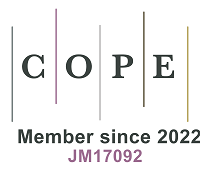REFERENCES
1. Cowan-Ellsberry CE, Robison SH. Refining aggregate exposure: example using parabens. Regul Toxicol Pharmacol 2009;55:321-9.
2. Gouin T, van Egmond R, Sparham C, Hastie C, Chowdhury N. Simulated use and wash-off release of decamethylcyclopentasiloxane used in anti-perspirants. Chemosphere 2013;93:726-34.
3. Wannaz C, Franco A, Kilgallon J, Hodges J, Jolliet O. A global framework to model spatial ecosystems exposure to home and personal care chemicals in Asia. Sci Total Environ 2018;622-623:410-20.
4. Safford B, Api AM, Barratt C, et al. Use of an aggregate exposure model to estimate consumer exposure to fragrance ingredients in personal care and cosmetic products. Regul Toxicol Pharmacol 2015;72:673-82.
5. Hodges JE, Holmes CM, Vamshi R, Mao D, Price OR. Estimating chemical emissions from home and personal care products in China. Environ Pollut 2012;165:199-207.
6. Gouin T, Avalos J, Meyberg M, Brunning I, Rettinger K, et al. Use of micro-plastic beads in cosmetic products in europe and their estimated emissions to the north sea environment. SOFW 2015;141:40-6.
7. Gouin T, Roche N, Lohmann R, Hodges G. A thermodynamic approach for assessing the environmental exposure of chemicals absorbed to microplastic. Environ Sci Technol 2011;45:1466-72.
8. Zhu Y, Price OR, Kilgallon J, et al. Drivers of contaminant levels in surface water of China during 2000-2030: relative importance for illustrative home and personal care product chemicals. Environ Int 2018;115:161-9.
9. Goldsmith MR, Grulke CM, Brooks RD, et al. Development of a consumer product ingredient database for chemical exposure screening and prioritization. Food Chem Toxicol 2014;65:269-79.
10. Phillips KA, Wambaugh JF, Grulke CM, Dionisio KL, Isaacs KK. High-throughput screening of chemicals as functional substitutes using structure-based classification models. Green Chem 2017;19:1063-74.
11. Comiskey D, Api AM, Barratt C, et al. Novel database for exposure to fragrance ingredients in cosmetics and personal care products. Regul Toxicol Pharmacol 2015;72:660-72.
12. The Soaps and Detergent Association. Exposure and risk screening methods for consumer product ingredients. 2005. Available from: https://www.cleaninginstitute.org/sites/default/files/research-pdfs/Exposure_and_Risk_Screening_Methods.pdf [Last accessed on 13 Jul 2022].
13. Hall B, Steiling W, Safford B, et al. European consumer exposure to cosmetic products, a framework for conducting population exposure assessments Part 2. Food Chem Toxicol 2011;49:408-22.
14. Hall B, Tozer S, Safford B, et al. European consumer exposure to cosmetic products, a framework for conducting population exposure assessments. Food Chem Toxicol 2007;45:2097-108.
15. Loretz L, Api AM, Barraj L, et al. Exposure data for personal care products: hairspray, spray perfume, liquid foundation, shampoo, body wash, and solid antiperspirant. Food Chem Toxicol 2006;44:2008-18.
16. Loretz LJ, Api AM, Babcock L, et al. Exposure data for cosmetic products: facial cleanser, hair conditioner, and eye shadow. Food Chem Toxicol 2008;46:1516-24.
17. Whelan MJ, Hodges JE, Williams RJ, Keller VD, Price OR, Li M. Estimating surface water concentrations of “down-the-drain” chemicals in China using a global model. Environ Pollut 2012;165:233-40.
18. Gouin T, van Egmond R, Price OR, Hodges JE. Prioritising chemicals used in personal care products in China for environmental risk assessment: application of the RAIDAR model. Environ Pollut 2012;165:208-14.
19. European Chemicals Bureau. Technical Guidance Document on Risk Assessment. European Commission; 2003. Available from: https://echa.europa.eu/documents/10162/987906/tgdpart2_2ed_en.pdf/138b7b71-a069-428e-9036-62f4300b752f [Last accessed on 13 Jul 2022].
20. National Academies of Sciences Engineering Medicine. Exposure science in the 21st century: a vision and a strategy. Available from: https://nap.nationalacademies.org/catalog/13507/exposure-science-in-the-21st-century-a-vision-and-a [Last accessed on 13 Jul 2022].
21. Hubal EA. Biologically relevant exposure science for 21st century toxicity testing. Toxicol Sci 2009;111:226-32.
22. Dionisio KL, Frame AM, Goldsmith MR, et al. Exploring consumer exposure pathways and patterns of use for chemicals in the environment. Toxicol Rep 2015;2:228-37.
23. Phillips KA, Yau A, Favela KA, et al. Suspect screening analysis of chemicals in consumer products. Environ Sci Technol 2018;52:3125-35.
24. Isaacs KK, Phillips KA, Biryol D, Dionisio KL, Price PS. Consumer product chemical weight fractions from ingredient lists. J Expo Sci Environ Epidemiol 2018;28:216-22.
25. Dionisio KL, Phillips K, Price PS, et al. The chemical and products database, a resource for exposure-relevant data on chemicals in consumer products. Sci Data 2018;5:180125.
26. Isaacs KK, Dionisio K, Phillips K, Bevington C, Egeghy P, Price PS. Establishing a system of consumer product use categories to support rapid modeling of human exposure. J Expo Sci Environ Epidemiol 2020;30:171-83.
27. Williams AJ, Grulke CM, Edwards J, et al. The CompTox chemistry dashboard: a community data resource for environmental chemistry. J Cheminform 2017;9:61.
28. Arnot JA, Mackay D, Webster E, Southwood JM. Screening level risk assessment model for chemical fate and effects in the environment. Environ Sci Technol 2006;40:2316-23.
29. Csiszar SA, Ernstoff AS, Fantke P, Meyer DE, Jolliet O. High-throughput exposure modeling to support prioritization of chemicals in personal care products. Chemosphere 2016;163:490-8.
30. Dellarco M, Zaleski R, Gaborek BJ, et al. Using exposure bands for rapid decision making in the RISK21 tiered exposure assessment. Crit Rev Tox 2017;47:317-41.







